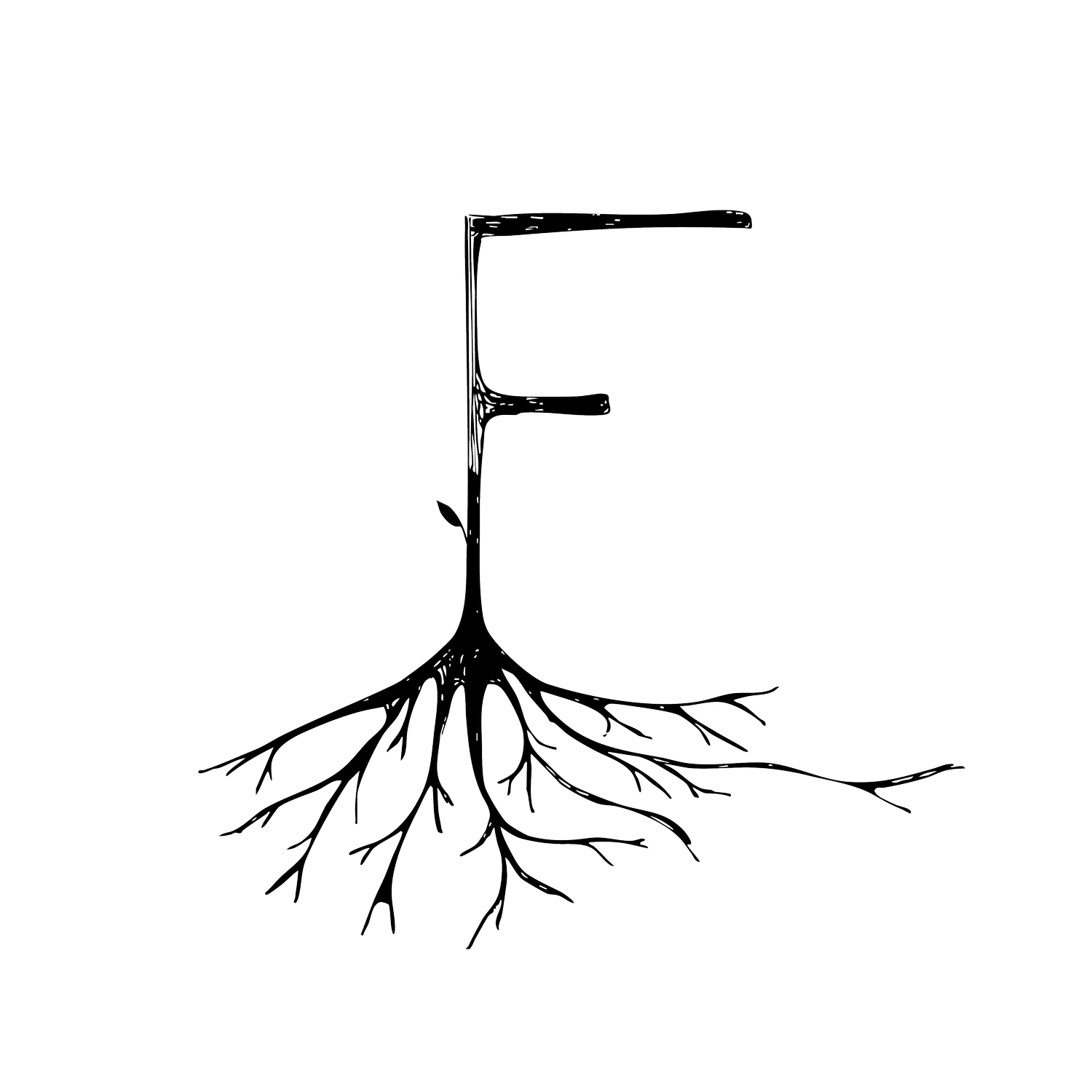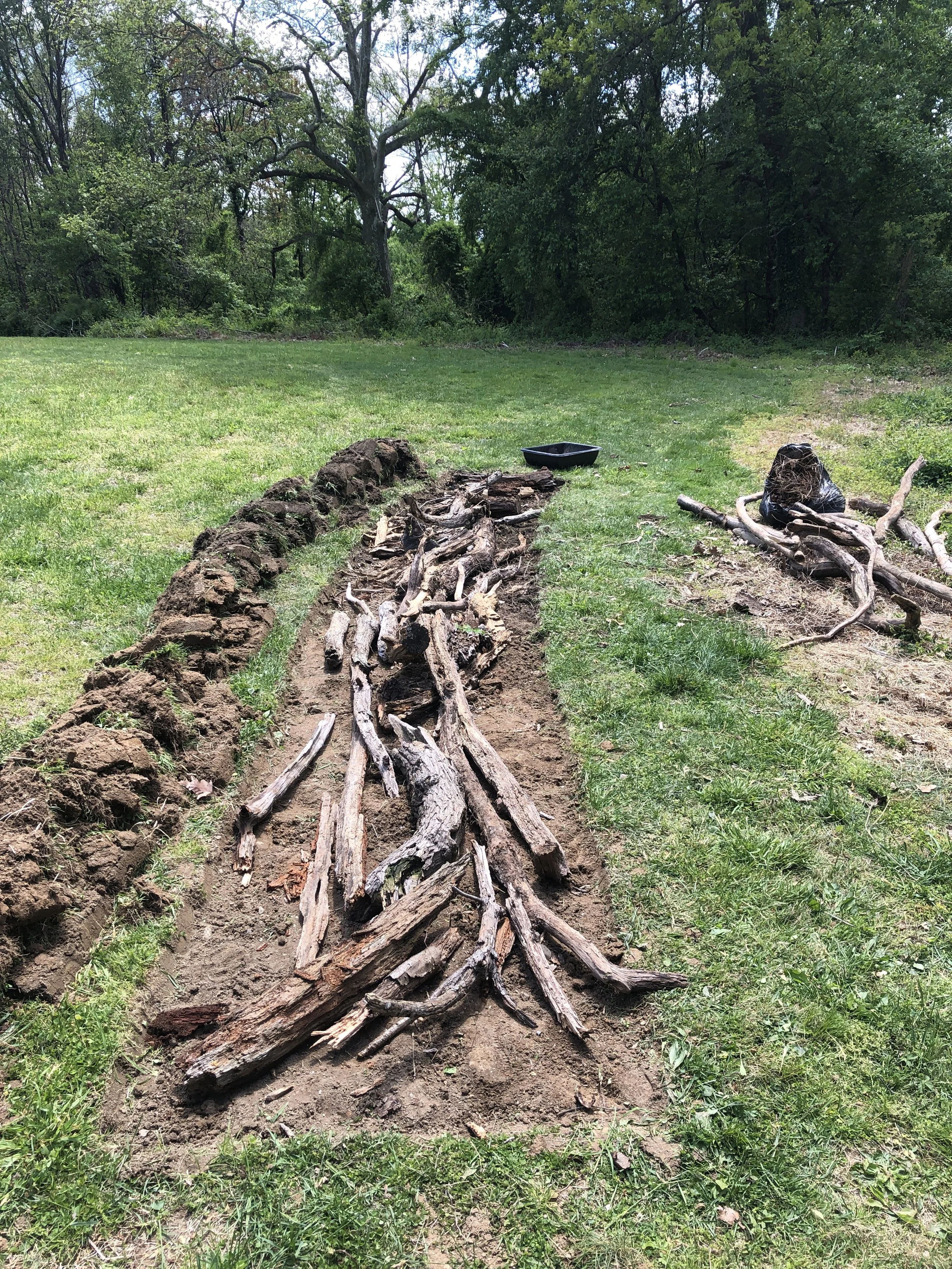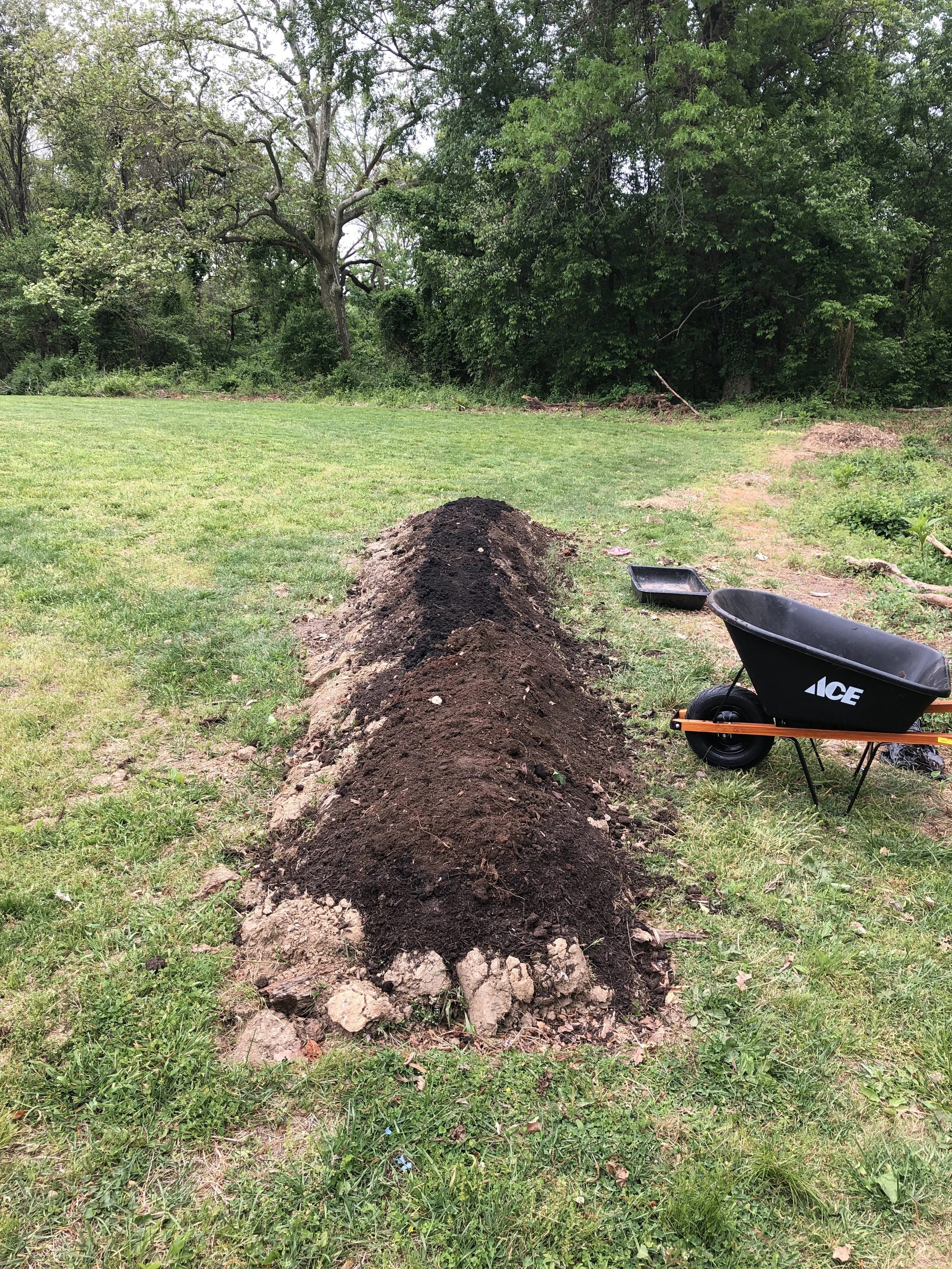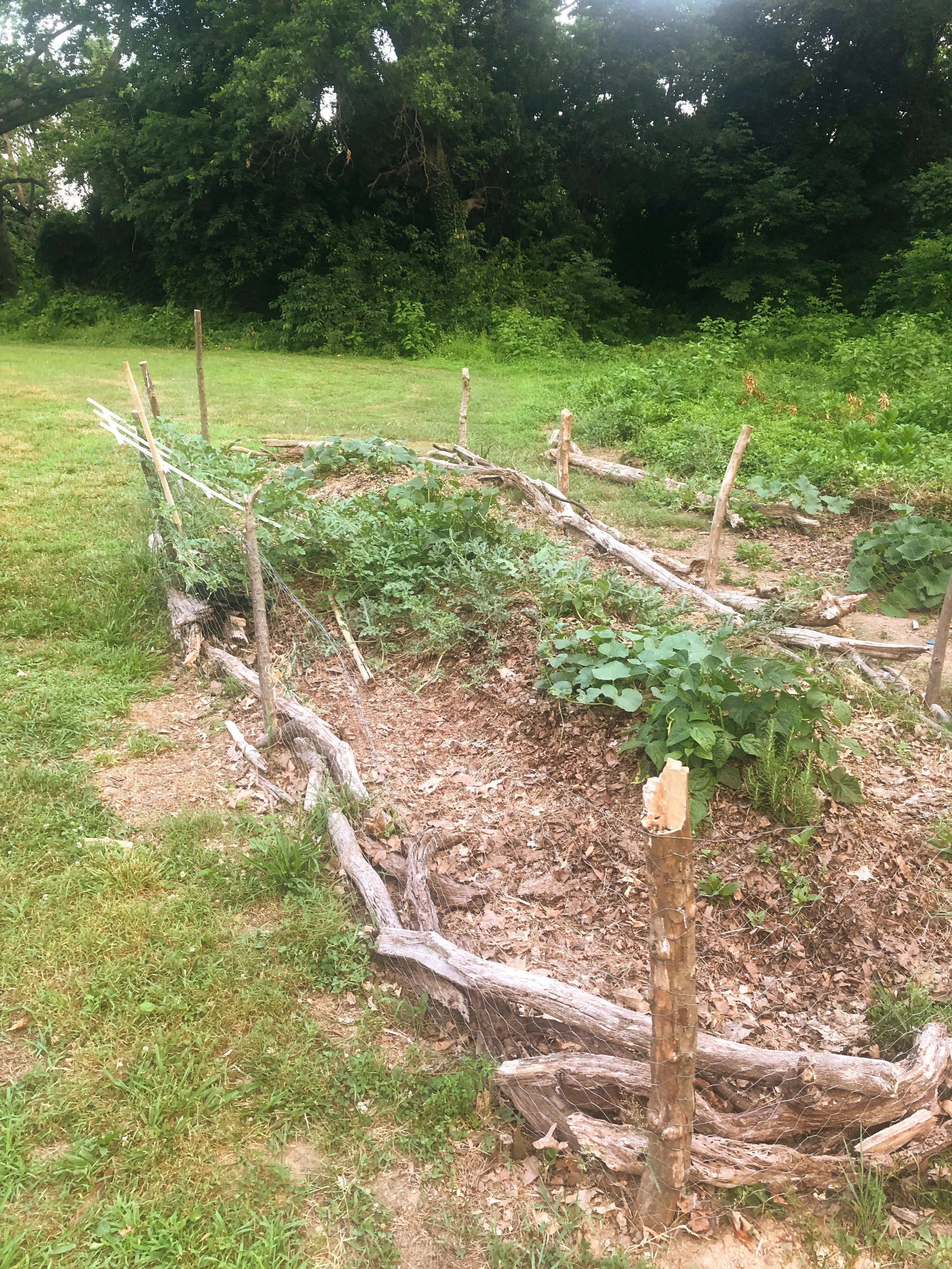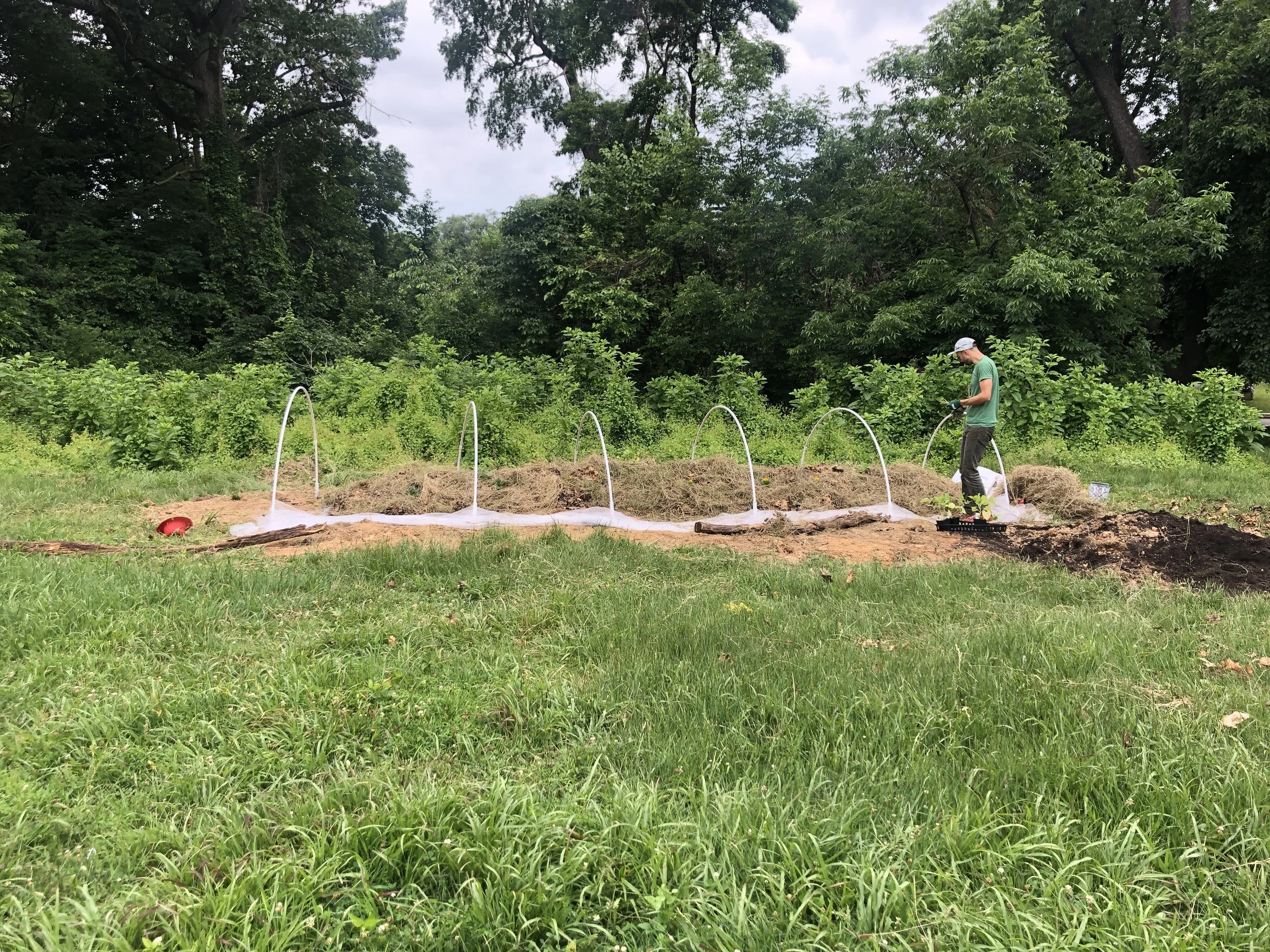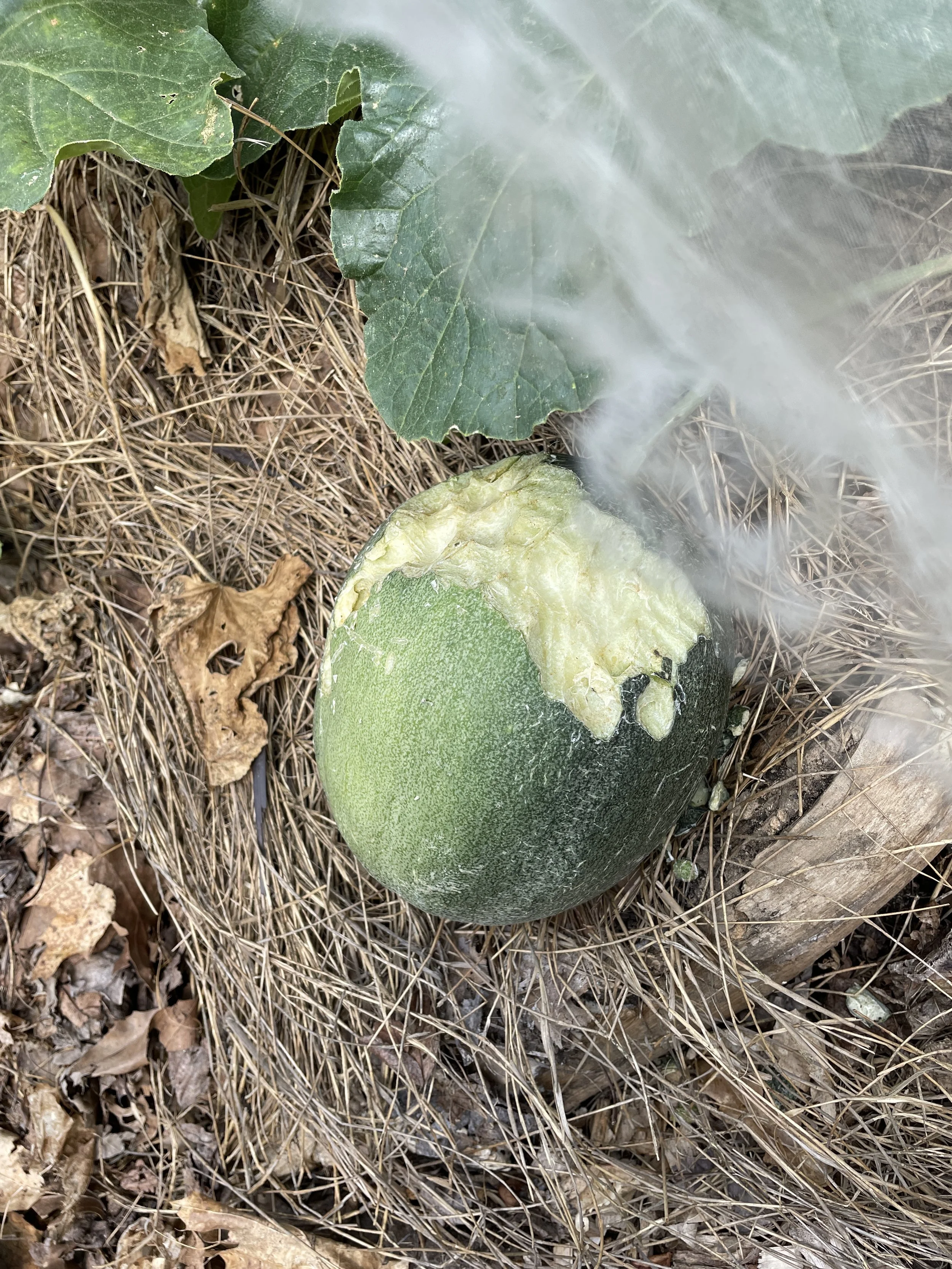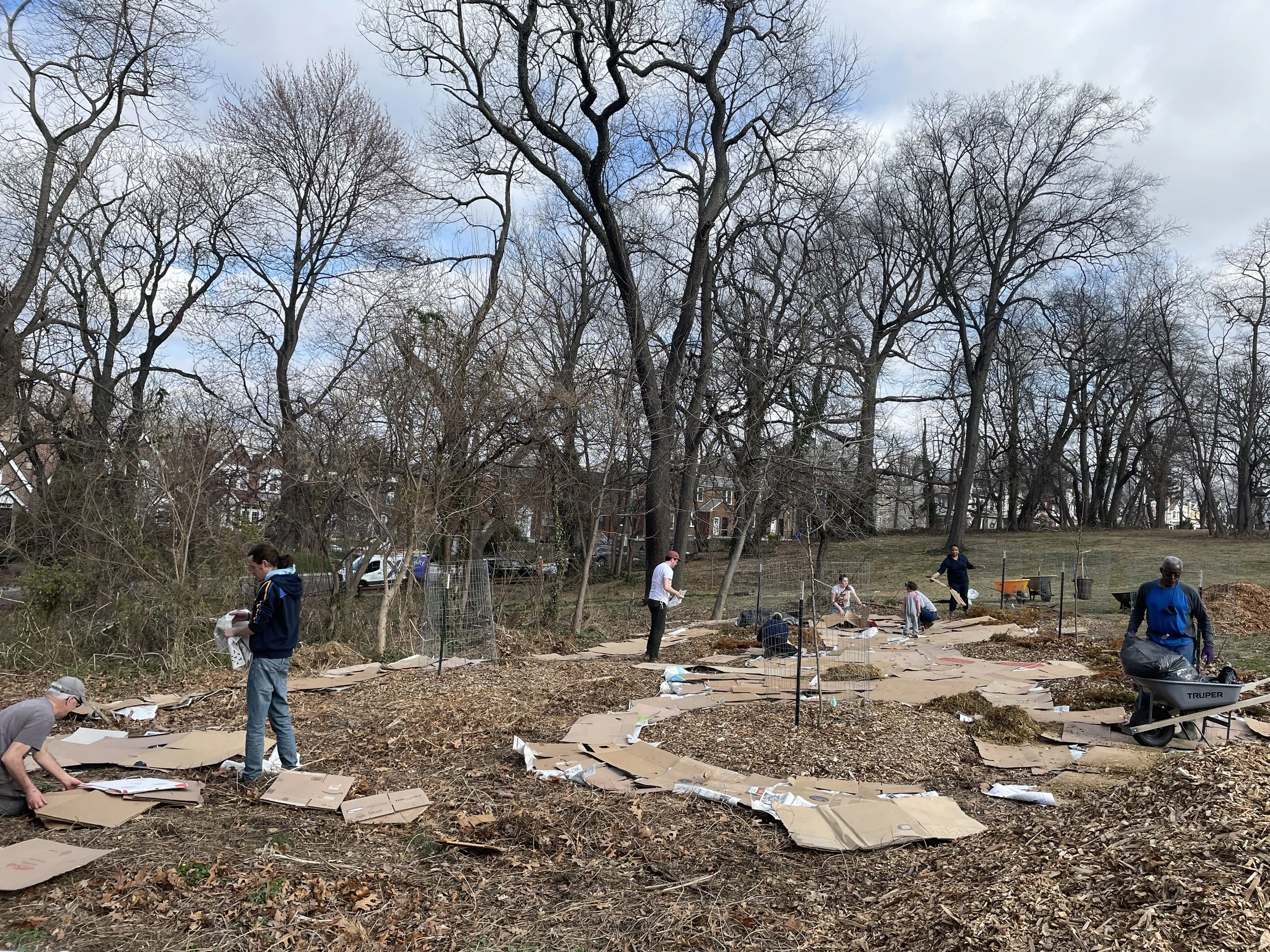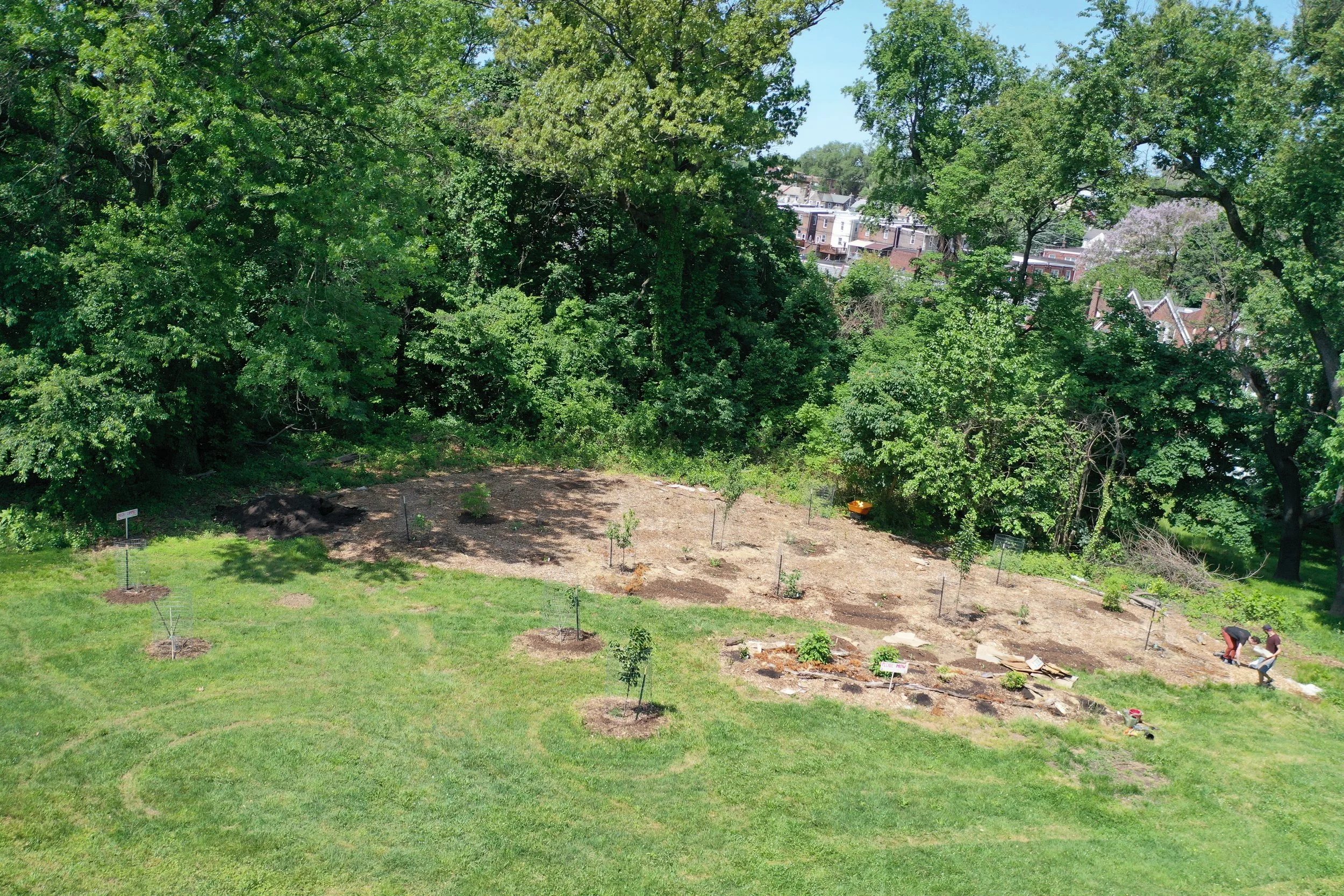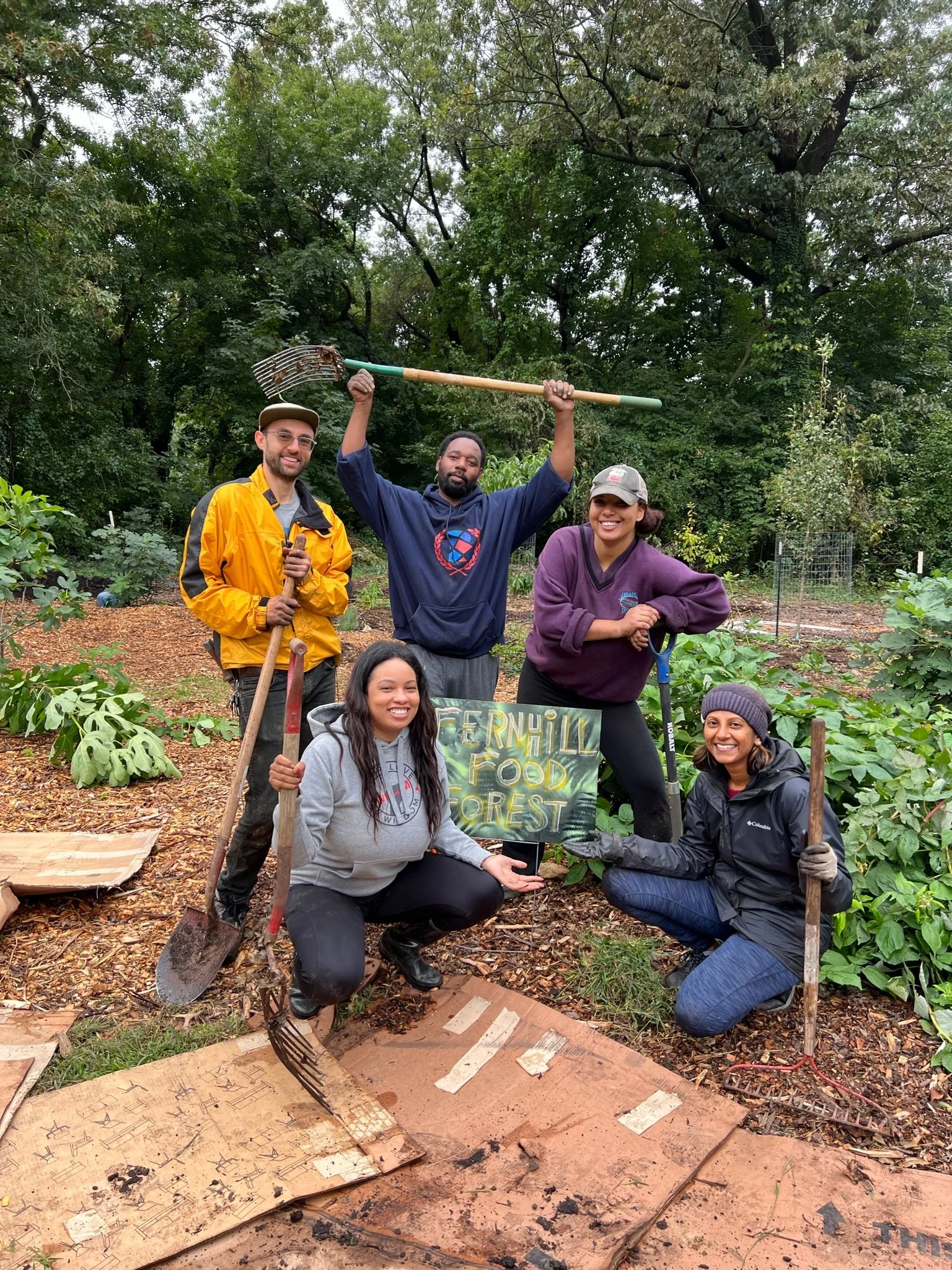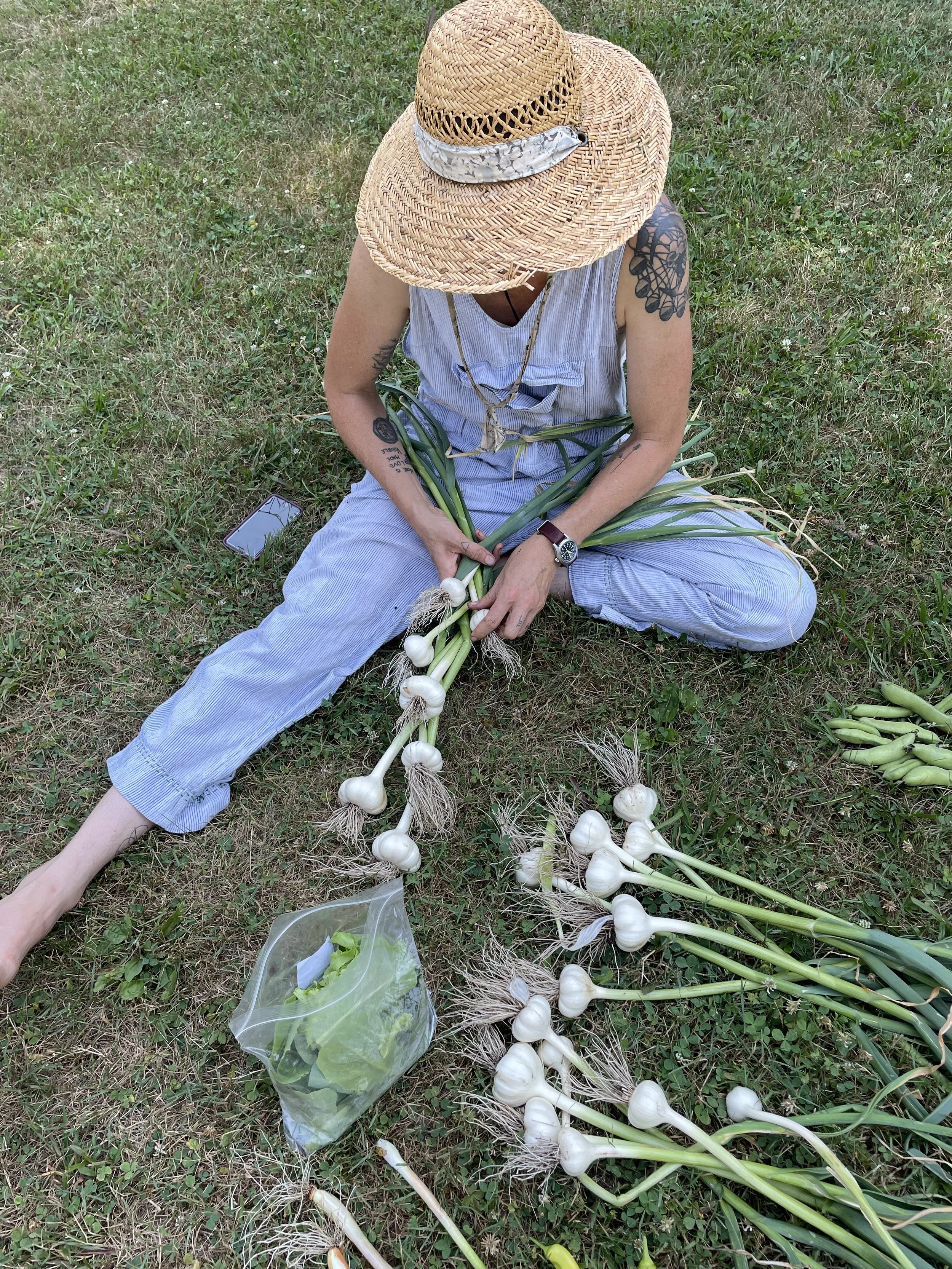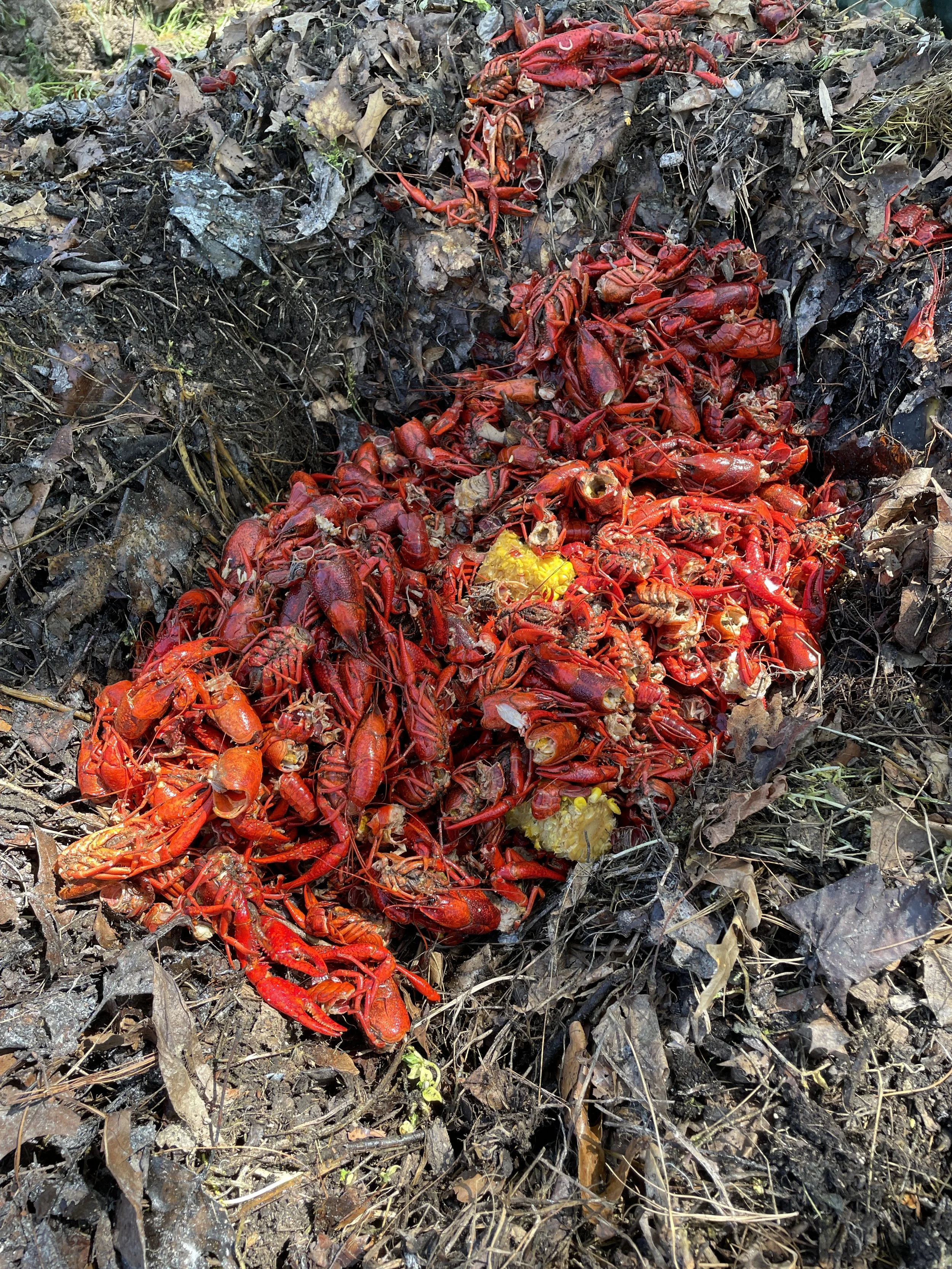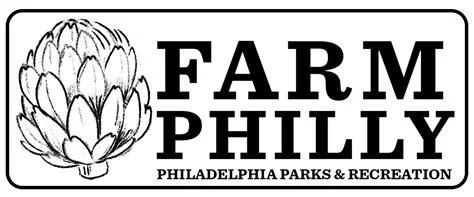Origins
The Rogue Garden
My name’s Jaron, and in 2020 I didn’t know what a food forest was.
But during the Covid lockdown, I had cabin fever like everyone else, was prone to impulsive projects, and loved growing vegetables. I was also feeling especially disheartened by our society’s destructive relationship with nature. Changing that felt far beyond my control, but growing food in a public space felt like a place to start, even if just for my own sanity.
To combat the lack of water, I tried using an ancient technique called hugelculture, which unfortunately started to resemble a type of burial.
Trying my best with the Covid plot on the park’s edge.
Look to the Pawpaw
The garden was kiiinda working—but between the groundhogs, the weeds, and hauling water by hand, it wasn’t exactly smooth sailing. I started wondering if there was a better way to go about it. Then I noticed the old pawpaw tree nearby. And a mulberry. Tasty things the groundhogs had no interest in. That got me thinking about perennials—and before long, I’d stumbled into the world of permaculture and food forests and all sorts of intersections between ecology and design that I’d never considered. By that point I was sold that a food forest could really work here.
One for me…
One for the groundhogs…
A Little Help From the Friends
I pitched the food forest idea to the Friends of Fernhill Park, a neighbor-run nonprofit that cares for the park and helps with community engagement. They graciously said yes, and even funded our first 12 trees. Together with some of my lovely neighbors helped we sheet mulched the weedy area and got them in the ground.
Sheet mulching with the neighbors. So. Much. Cardboard.
May, 2022. Just some baby trees and a whole lot of mulch in between.
Joining Forces
In the early days when I was still digging around solo, reactions ranged from curious to confused—and probably a little suspicious. But when I met Kia, she was not only curious, but full of enthusiasm and ideas for how the food forest could grow into something bigger. She lived just across the park, grew up in the neighborhood, and was an anchor and a connector in the community.
With Kia’s encouragement, I kept at it—pulling weeds, planting things, and figuring it out as I went, still without much of a long-term plan. Before the pandemic, I spent a lot of time on the road touring as a musician, but Covid had brought all of that to a halt. But by spring of 2022, shows were back on, and I was once again spending long stretches away from home. That’s when I met Sumanya.
Despite working full-time as a nurse in North Philly, Sumi offered to help, and quietly took on the heroic task of hauling in water and hand-watering everything. She never complained, just kept showing up with the same calm reliability she seems to carry with her everywhere.
Kia and Sumi became the backbone of the food forest, helping turn a scrappy experiment into something more rooted, collaborative, and real.
An early workday (and our first official sign made by Birdie Busch)
Slow n’ Steady
With Sumi and Kia’s steady presence, and the help of a rotating cast of volunteers, we started to really get somewhere. By spring of 2024, we had about half an acre planted with all kinds of young trees and perennial plants, mostly in an open permaculture style, with one fenced area for more traditional annual rows. We’d built an open shed to store tools and collect rainwater, and we started hosting volunteer days on weekends, sharing whatever was harvested with each other. I met far more people in the neighborhood in those last few years than I had in the previous 7 that we’d lived there. We had also built partnerships—with the Philly Orchard Project, Pennsylvania Horticultural Society, Parks & Rec—and even received a few microgrants.
That’s when Sunni Bell moved to Philadelphia.
Summer 2023 — the rain catchment was up, new veggie beds were in, and the space was starting to fill in with more plants (and people).
Sunni
I was out in the food forest doing my usual tinkering when Sunni came by and introduced herself. Within minutes it became clear that we shared a love for plants, that she knew way more than I did, and that I wanted to be her friend. (She didn’t even blink when I floated the idea of composting a trash bag full of crawfish shells.)
I’d been nerding out on permaculture and soil ecology and all the ways it intersects with food systems and culture, but the food forest was still a bit of a wild experiment. Sunni, on the other hand, was the real deal. She’d grown just about everything, raised and milked goats, made herbal concoctions, taught workshops, and who knows what else.
Over the next year, Sunni and I worked tirelessly together, and she kept it all going while I was on tour, continuously brining new ideas and energy into what we were doing and where we were going.
Sunni and her family were only in Philly for a year, but the impact she had on the food forest was profound—and she continues to be involved from afar, back in Alabama.
We like plants 🤓
Sunni’s experience with community gardens helped us get more organized with volunteers
First time I saw how to braid garlic
Those crawfish composted beautifully
Thanks And More Thanks
While the four of us form the core team, none of this would have been possible without the support of so many others. Volunteers—whether consistent or drop-in—have had a huge impact on keeping the food forest growing and cared for. We’ve received incredible support from POP, PHS, and Parks & Rec, and PowerCorps has helped immensely with their hard-working crews.
Another vital part of our team is Friends of Fernhill Park (FOFP), a volunteer-run nonprofit made up of dedicated neighbors who deeply value the park and its role in our community. I’m grateful to the support they gave back in 2021, and today FOFP holds the food forest under its 501(c)(3) umbrella, which is a huge help as we continue to grow.
Lastly, we’re incredibly thankful for the generous grant we received from the Look & See Foundation in March 2025. Their support has helped us take all the hard work we’ve put in through volunteer efforts to the next level. Thanks to this funding, we’ve been able to purchase more plants and tools, dedicate more time to caring for the space, and engage more with our community.
